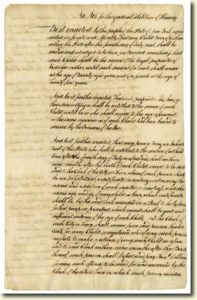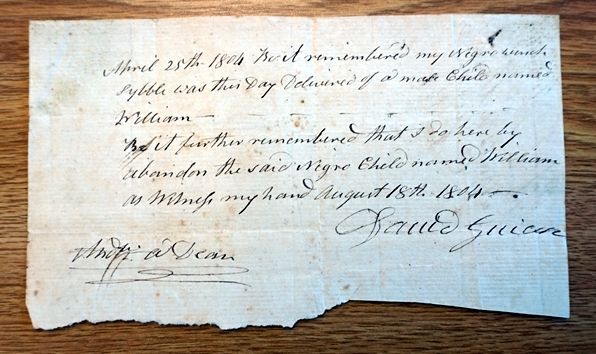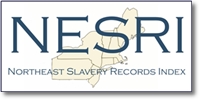 A major project of the Northeast Slavery Records Index is to identify County, Town and City records of enslavement to promote their preservation and assure access to the information the records contain. For New York State, the State Archives records retention and disposition regulations require that “registries of slaves” be retained permanently, and are subject to public access based on the Freedom of Information Law, although the mode of access must be consistent with the preservation of the original records, so access might be provided to digitized or electronic versions of the records.
A major project of the Northeast Slavery Records Index is to identify County, Town and City records of enslavement to promote their preservation and assure access to the information the records contain. For New York State, the State Archives records retention and disposition regulations require that “registries of slaves” be retained permanently, and are subject to public access based on the Freedom of Information Law, although the mode of access must be consistent with the preservation of the original records, so access might be provided to digitized or electronic versions of the records.
A 1785 law regulated emancipations to make enslavers responsible for lifetime care of the people they enslaved. Enslavers had to pay a bond to cover potential costs, or secure a certification by the local Overseers of the Poor that the person being emancipated as capable of his or her own support. The emancipations were documented in town or city records.
Furthermore, the 1799 Gradual Emancipation law mandated that records of births to enslaved mothers be developed and maintained by the clerks of Towns and Cities, but over the years they have not been consistently protected and archived. We are finding them in the archives of Clerks’ Offices, in libraries, historical societies and archives of cities, counties and NY State. We also have located Comptroller’s Office records processing payments for foster care of abandoned children, but most of these records do not have corresponding original birth registration abandonment records.
The 1799 Act for the Gradual Abolition of Slavery provided that “any child born of a slave within this state after the fourth day of July next shall be deemed and adjudged to be born free: Provided nevertheless. That such child shall be the servant of the legal proprietor of his or her mother until such servant, if a male, shall arrive at the age of twenty-eight years, and if a female, at the age of twenty-five years.”
It further provided that “every person being an inhabitant of this state who shall be entitled to the service of a child born after the fourth day of July as aforesaid, shall, within nine months after the birth of such child, cause to be delivered to the clerk of the city or town whereof such person shall be an inhabitant, a certificate in writing containing the name and addition of such master or mistress, and the name, age and sex of every child so born…”
In NESRI, the above birth records are tagged as “REG” for registrations, identifying children claimed for servitude.
The Act also provided for the abandonment of the newborn children: “The person entitled to such service may, nevertheless, within one year after the birth of such child, elect to abandon his or her right to such service, by a notification of the same from under his or her hand, and lodged with the clerk of the town or city where the owner of the mother of any such child may reside; in which case every child abandoned as aforesaid shall be considered as paupers of the respective town or city where the proprietor or owner of the mother of such child may reside at the time of its birth; and liable to be bound out by the overseers of the poor on the same terms and conditions that the children of paupers were subject to before the passing of this act.”
These records are tagged as “ABN” can mean that the owner separated the child from the mother and presented the child to the overseers of the poor. The state paid $3.50 per month for the care of the abandoned children. ABN can also mean, particularly after payment program was terminated in 1804, that the owner was “abandoning” the right to future services by the child, but the child remained in the household.
A major project of the New York Slavery Records Index is to identify these records and assure access to them. The 1799 law mandated the records to be developed and maintained by the clerks of Towns and Cities, but they have not bee consistently protected and archived. We are finding them in the archives of Clerks’ Offices, in libraries, historical societies and archives of cities, counties and NY State. We also have located Comproller’s Office records processing payments for foster care of abandoned children, but most of these records do hot have corresponding original birth registration abandonment records.
The following is an example of a birth registration.

Below is a table of such records for New York and New Jersey. For New York records click on the “+” next to NY, and then click on the “+” next to a county and the towns and cities where records have been indexed are displayed. Click on the count of the number of records for a list of the individual records. Click on “View Details” to more information on any record.
Your can also see the records for a particular locality, by going to our Locality Enslavement Records Report and enter the state as NY, and the county and locality of interest. The report is extensive, and many of the listed enslaved persons are tagged as “REG” for registrations, “ABN” for abandonments and “EMN” for emancipations. When there are no such records, it is likely that the records exist but have not been indexed yet.



